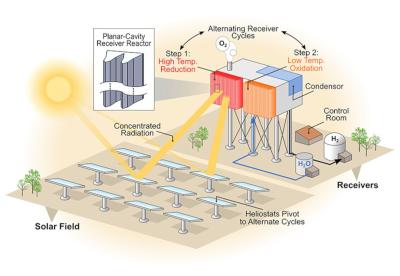A recent analysis carried out by scientists at the National Renewable Energy Laboratory (NREL) have found that perovskite materials could play an important role in a process to produce hydrogen in a renewable manner.

The NREL scientists analyzed an emerging water-splitting technology called solar thermochemical hydrogen (STCH) production, which can be potentially more energy efficient than producing hydrogen via the commonly used electrolysis method. Electrolysis needs electricity to split water into hydrogen and oxygen. STCH relies on a two-step chemical process in which metal oxides are exposed to temperatures greater than 1,400 degrees Celsius and then re-oxidized with steam at lower temperatures to produce hydrogen.
The paper complements ongoing materials discovery research by looking at the system-level design and techno-economic analysis for integrating possible materials into a solar-fuel platform and supporting the Department of Energy's HydroGEN program. The material discovery in the HydroGEN program involved machine learning, defect calculations, and experimental work to develop new perovskite materials. The researchers need to identify perovskites capable of handling the high temperatures required while hitting performance targets.
This work shows part of a portfolio of techno-economic analysis focused on hydrogen production pathways each with its own advantages and disadvantages. Electrolysis, for example, is commercially available and the electricity required can come from photovoltaics (PV). The PV cells used, however, only capture a section of the solar spectrum. STCH uses the entire spectrum. The concentrated solar thermal power enables STCH to create the chemical reaction.
Active research to identify the best materials for the STCH process is critical to the success of this method for hydrogen production, the scientists noted.
'The material has not necessarily been found,' Saur said, 'but this analysis is to provide some boundaries for where we think the costs will be if the materials meet some of the targets and expectations that the research community envisions.'



